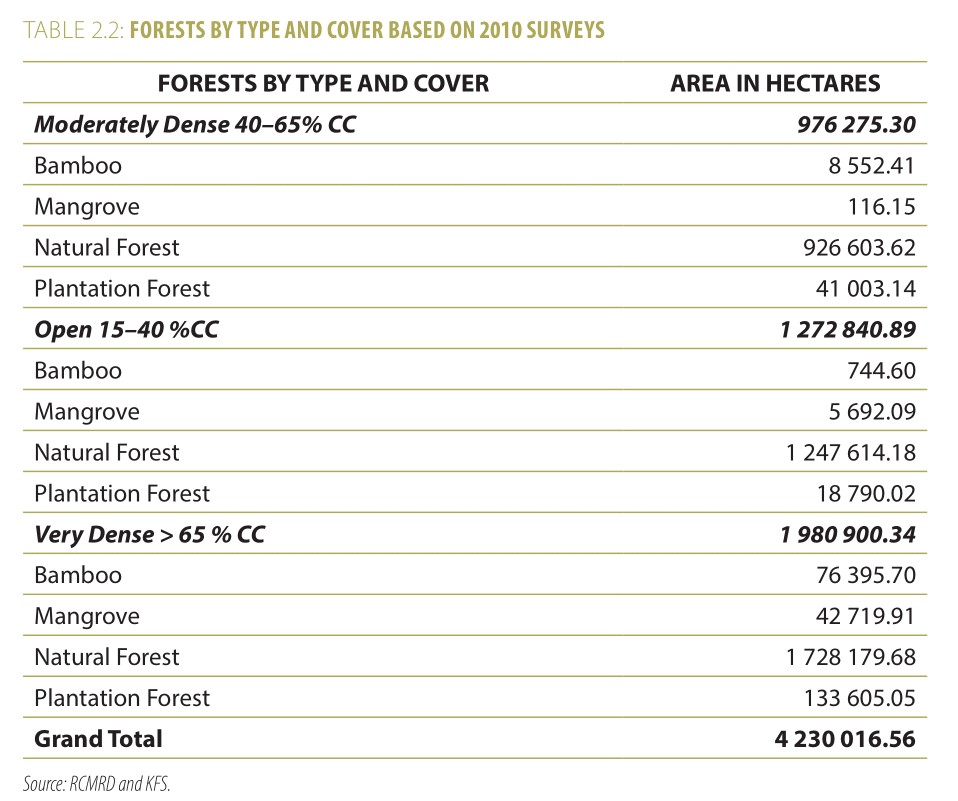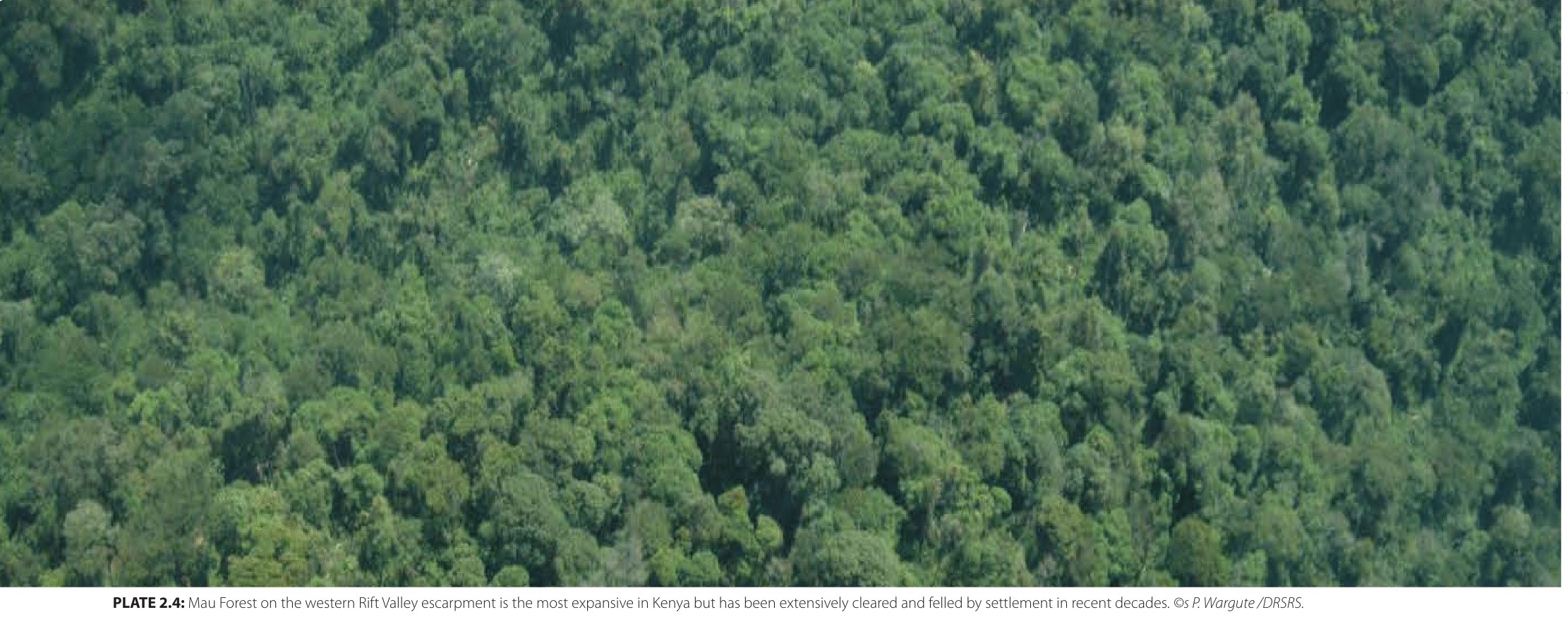Forests
Forests are distinguished by tall trees and a closed-canopy. Little light penetrates to the forest floor in mature stands, resulting in a fairly sparse understory of plants. Kenya has several types of forest, including coastal, mangrove, mountain and upland, bamboo, the equatorial forests of Kakamega and plantation forests. Forests vary not only in composition but also cover,

Kenya has 3.5 million ha of forests, including indigenous forests, open woodlands, and plantations, and an additional 24.6 million ha of ‘bushland’. These are highly fragmented and degraded forests patches. An estimated 10 per cent of the original wet montane forest remains. Much of the forest cover was lost in the early stages of expanding human cultivation that began some 2,000 years ago and accelerated with the fivefold increase in population, and extensive agricultural expansion since the early 1900s. The demand for timber, fibre and fuelwood spawned by Kenya’s economic growth over the last half century, coupled with an insufficient forest plantation, settlement schemes, and illegal farming and herding, greatly accelerated forest loss and degradation.
Importance of Forest
Forests provide important ecological services in the way of water catchment, spring and river flow, regulation of nutrient cycling, and erosion and flood abatement. Forests have been called the lungs of the Earth and account for a quarter of all carbon capture that, in an age of fossil fuel combustion, is important in moderating global warming. Forests are the richest of all ecosystems in terms of plant and animal species, accounting for a quarter of all biodiversity. Kenya’s forests are not only rich in species, but also harbour many endemic animals and plants. Food, building materials, fuelwood, medicinal plants and animals, a refuge from drought for pastoralists and a place of spiritual, cultural and ceremonial significance are some of the many values ascribed to forests. The Mijikenda of coastal Kenya conserve kayas, forest patches of special ancestral and spiritual importance to their identity. As a nation, Kenya has placed a high value on forests as water catchments and symbols of its commitment to conservation and climate change mitigation. The constitution sets a goal of attaining 10 per cent forest cover countrywide. Forests have also become important to Kenya’s tourism industry and to meet the growing demand for outdoor recreation, nature walks, education and research.


